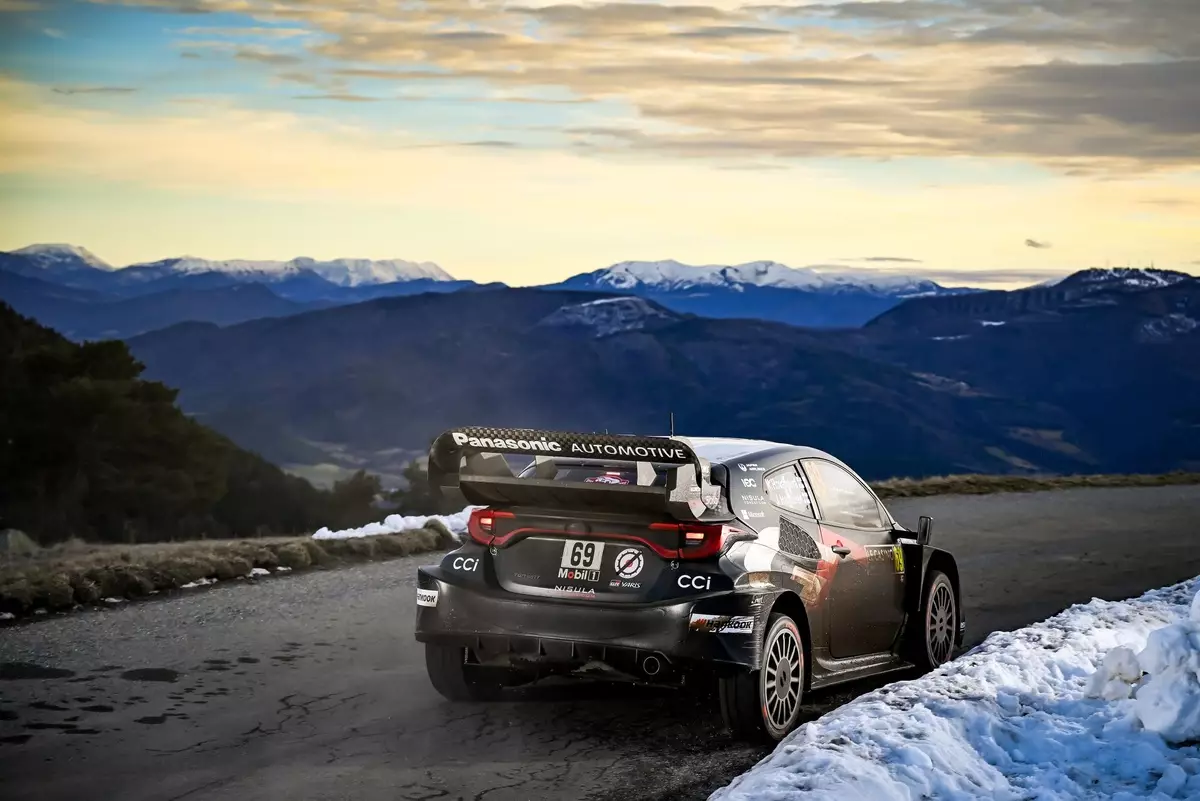The world of motorsport is replete with challenges, none more so than adapting to changing conditions and equipment. Kalle Rovanpera, a standout figure in the World Rally Championship (WRC) and two-time world champion, is currently facing the intricacies of the new Hankook control tyres. As the WRC season kicked off in Monte Carlo, Rovanpera’s initial performance signaled a need for considerable adjustment in his driving technique and car setup.
Rovanpera’s candid admission highlights a significant hurdle: his conventional driving style may not be optimal for the slick Hankook tyres. This situation poses an important question: how does an elite driver transition when faced with equipment that does not align with their instincts? Throughout the season opener, Rovanpera struggled to leverage the full potential of the tyres, particularly in constantly changing conditions that define the Monte Carlo rally. His frustration is palpable; during an interview, he expressed, “I think overall it is pretty clear that maybe the driving style that I normally have doesn’t work with the slick tyre.”
In motorsport, adaptability is key to success, and Rovanpera’s experience at the Devoluy rally last year and his conduct during testing have underscored the challenges posed by varying tarmac conditions. His ability to quickly recalibrate his approach has been proven in the past, but this year seems different. The quest for the ‘sweet spot’ in the current context has turned out to be far more complex than anticipated.
Despite these struggles, Rovanpera demonstrated resilience by claiming a stage win on the fourth segment of the rally, showcasing that he possesses both skill and determination. By the end of Friday’s competitive events, finishing in fourth place placed him significantly behind his Toyota teammate, Sebastien Ogier. Ogier led the rally, a fact that Rovanpera acknowledged, understanding that maintaining focus on performance is crucial. He noted, “A top four from this rally would be okay but I should be able to be at a bit better pace.” This acknowledgment of his position underlines a critical aspect of competitive sports: the relentless pursuit of improvement.
The nuances of competition in the WRC can significantly skew results, especially when dealing with a control tyre change. Rovanpera’s previous attempts in Monte Carlo demonstrate a need to chart these complexities and learn from them hurriedly, as evidenced in his earlier seasons when the Rally1 car concept was first introduced.
Remarkably, while Rovanpera grapples with his tyre dilemmas, Toyota’s overall performance remained robust. The team finished the day with a dominant presence, with three of their five cars performing exceptionally well. Ogier’s ascent to the lead also served as a reminder of the unpredictability of rally sports—where experience often proves beneficial. The nine-time Monte Carlo winner celebrated his achievement, stating, “Experience is always helping in this moment… It was nice to finally achieve a win in my home stage.” Nevertheless, he acknowledged that rhythm and confidence are fragile components in rally driving, emphasizing the ongoing struggle to find optimal vehicular limits.
Together, these narratives highlight a broader theme in motorsport: the balance between individual performance and team dynamics. Rovanpera’s need to adapt while observing teammate success poses a unique pressure on him, further complicating the emotional and competitive landscape of the sport.
As the season progresses, the scrutiny on Rovanpera’s capability to recalibrate his driving style alongside the team ethos at Toyota will undoubtedly intensify. The need for constant evolution in driving mannerisms in response to the regulatory shifts around tyres is a microcosm of the eternal struggle in motorsport: the intersection of man, machine, and changing environments. As he seeks to unlock the secrets of his slick tyre challenges in Monte Carlo, fans and competitors alike await whether Rovanpera can transcend adversity and regain his position at the top. His journey serves not only as an inspiring tale of perseverance but also as a crucial lesson in adaptability—a reminder that even champions must continually learn to stay ahead in the game.

